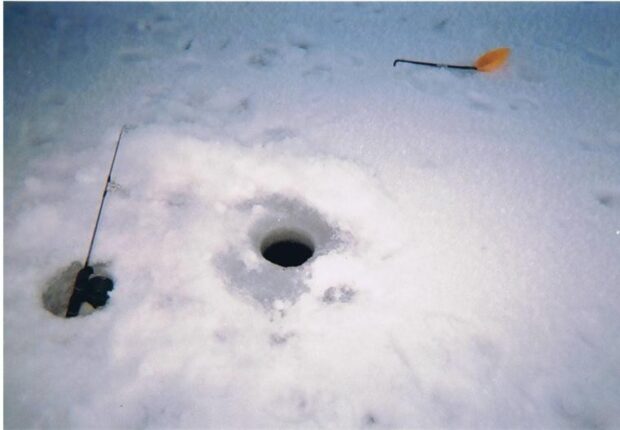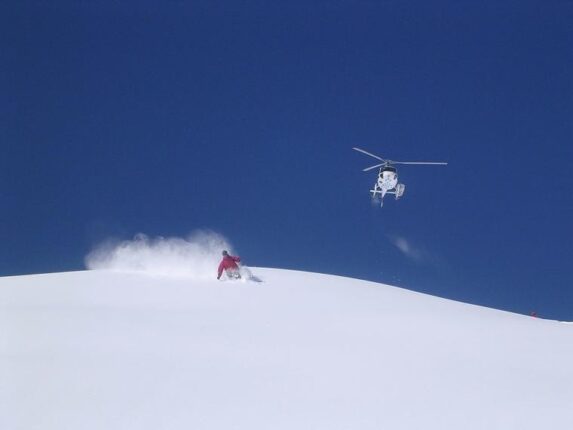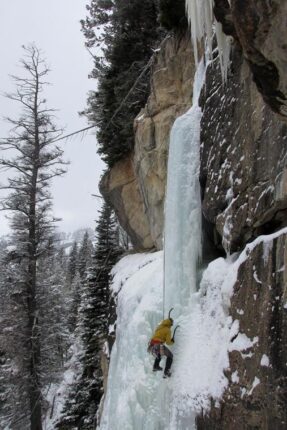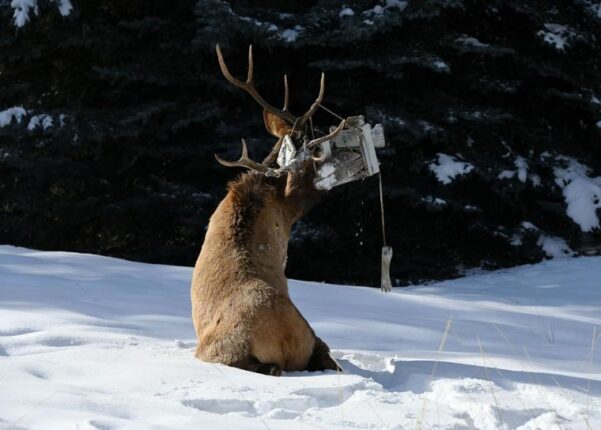OK, I’m not a hard-core died-in-the-wool ice fisherman. I’m a fair weathered ice fisherman. Well, I guess there’s no such thing as a fair weathered fisherman or you’d never go ice fishing. It’s always cold or there’s no ice. Let me give you a couple of examples.
I used to have a few ice fishing buddies who were a little warped. On the longest day of the year, they liked to go up to the mountains and ice fish all night. I just didn’t know if that sounded like a good time.
Well, anyway, they talked me into going with them on New Year’s Day.
A vendor had given me a big party tray. I thought I’d take it for snacks. One of the buddies had an ice fishing hut that he was quite proud of. The rest of us were going to be setting on 5-gallon buckets.
As we were setting up a big-time mountain wind gust hit. Buddy No. 1 was in his ice hut setting it up. When the gust hit, he went skidding across the ice. He was inside screaming for help. We all ran over and grabbed a corner of the hut and were able to slow it down.
In the meantime, all of our gear was blowing across the lake. Luckily there was a barbed-wire fence on the other side of the lake that caught all of our gear. We got his hut staked down and then headed across the lake picking up gear. All the way across there were little red frozen marbles.
Finally, I figured out it was frozen little tomatoes off of my tray. You wouldn’t believe how far the sausage slices had pinwheeled across the lake. And slices of cheese ended up in all kinds of random places.
We finally gathered all of our gear and got set up. After all of that excitement, I can’t even remember how the fishing was.
Another unique trip: It was getting late in the season and warming up but a buddy talked me into going ice fishing. We hit a small reservoir which had some awesome bluegill fishing. The problem was, the snow had melted so there was about ½-inch of water on top of the ice. If a fish hit and all three of us ran over to check the rod the ice would start dipping down and consequently more water would run out of the hole so the water was now 2-inches deep. Only one of us at a time could go reel in a fish.
Although the fishing was good, after a while we figured it was getting semi unsafe. We had an eye for the obvious.
So now that I’ve painted such a pleasant picture of ice fishing, what gear will it take for you to get into it? Really, it is quite simple to get into. To begin, you’ll need an auger. You can buy a hand auger pretty cheap but if you really get into it you’ll want a gas auger.
To save someone from stepping in a hold we are limited to holes no larger than 10 inches. For rods tip-ups are the cheapest. Or they have miniature little rods that are something like 2-foot long.
It’s nice to have a V stick to set them in so you can see them tip over. Don’t expect aggressive hits. If you get a little tap start reeling. If you’re not looking, you’ll miss a hit.
To find the fish can be tough. Up at Cascade I always have good luck asking at Tackle Tom’s. Following the crowds is smart, too. Find out where the fish are in the water column. Usually drop down to the bottom and then reel up a couple of feet. You can have up to five rods so start fishing at different depths until you locate them and then zero in with all five rods.
Most people use little ice fishing jigs tipped off with meal worms or worms. This winter I’m going to use some Pautzke Fire Gel, which is a gel that has fish smell attractant. The longer I fish, the more stock I put in attractants. I’m also going to use some Pautzke Crappie Fireballs.
One other thing you’ll need is an ice scoop to scoop ice crystals out of the hole after you drill it and to scoop out ice as it forms in the hole. Also, a big deal is a sled. I use the cheap little red kid’s sled. With a sled you can throw all of your gear into two 3 to 5 gallon buckets and put on the sled. Tie a rope to the sled and then you can pull it across the lake.
If you’ve never ice fished it will freak you out at first. As you’re fishing the ice cracking will make weird harmonic sounds. If the ice is 4-inches thick everyone will tell you that it is safe. I like it a little thicker. But when it gets too thick, it is hard to drill through.
I feel like that I am hardly getting started and we are out of room. Good luck and be safe.
Carry a rope in case someone breaks through the ice. Wear thermal base layers like XGO in case you get wet. Carry a tent heater to keep warm.
Tom Claycomb lives in Idaho and has outdoors columns in newspapers in Alaska, Idaho, Utah, Nevada, Colorado and Louisiana. He also writes for various outdoors magazines and teaches outdoors seminars at stores like Cabela’s, Sportsman’s Warehouse and Bass Pro Shop.







